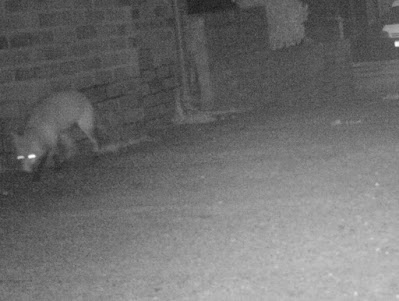The Safari can't quite believe our last post was way back in early October and we apologise profusely for not keeping you up to date with all the exciting wildlife we've been lucky enough to come across during these somewhat trying times - not least because many of our favourite wildlife sites are well and truly 'out of bounds'.
As regular visitors will know we've been in a regular Photo Year List Challenge. Last year we managed a very credible 205 species of vertebrates and with a little bit more luck could have broken 210. This year is the Challenge's fifth and the rules are the same as last year all vertebrates - no captives, no sub-species - count so we're setting a target of 200. It's a worldwide challenge with most of the participants living in the Pacific NW of the USA and last year's winner and runner-up were both well over 300 a tally we can't possibly hope to achieve so we have our own mini-challenge beat my brother based in NE Italy and Monika the Challenge originator from San Juan Island, we split the two last time with my brother on 200 and Monika on 210.
So off we go with 2021. Icy cold weather early in the month meant sunny days to make the most of during our permitted socially distanced lock down exercise so we had a couple of days out with good friend CR around Marton Mere as well as a shimmy round Stanley Park and almost daily visits to the coast with the mutt.
Our challenge got off to a predictable start with a stunning Starling along the cliffs
The white near the tip of its bill is ice/frost that's frozen from when it was in the ditch. When we started birding in the late 60s you'd have to go to the southern half of France in the summer to see these birds.
We didn't do the full circuit as we could see there was only a tiny patch of unfrozen water that was probably not visible over the reeds from the hide so we turned round and retraced our steps. It was then a Bittern got up out of the reedbed we'd just been stood by and flew the length of mere flushing hundreds of gulls in the process before it landed in the reeds at the far end. We struggled to lock on to it with the camera especially when it was going through the gulls, this was the only 'usuable' pic out of over 100. It's identifiable so counts for the challenge and a good one to get early on as they can be tricky but not as tricky as that other reedbed skulker Cetti's Warbler that we totally failed on for last year's challenge.
We've had the stealth-cam out at Base Camp and picked up our local Fox which we've seen a couple of times and heard barking in the small hours a couple more.
It's being hopeful that we'd left another Turkey carcass out for it which we hadn't; one Turkey between two over Christmas is more than enough! A few nights each week we do leave a little something out for him/her though, a hard boiled egg, a few dog biscuits, a bit of left over dinner (that doesn't happen often!!!!!!).Our first dog walk of the morning is before breakfast and it's still not quite light and certainly far to dark for the camera but most mornings we've heard the local Song Thrush giving it some welly his favourite Sycamore tree. Today he was being answered by another just across the green - don't think we've ever heard two singing at the same time here before. We've even seen one twice now early morning foraging on the lawn of a garden two doors away from Base Camp but they are ssoooo rare here barely an annual visitor. However, we have managed to get a pic of one during our last visit to the nature reserve in brilliant sunshine too even if the twiggery made for some tricky focusing.
In previous challenges there's been a bit of a twist, a couple of years ago it was 'no hand of man in the pics' a tricky one, this year it's pics containing multiple species as sort of a sub challenge and more than that unusual combinations of species. So far we've got a couple of contenders.
If the nearby Moorhen, Gadwall and Grey Lag Geese had played ball we could have got double figures in this oneAnd in this one freezing weather can make for strange bed-fellows.
In not so good news it looks very likely that one of our favourite local biodiversity hot spots is going to built on before too long. Not sure how the developers can achieve 'no net loss of biodiversity' when there's so much there and we suppose there won't even be a single street tree provided on the new estate and if there is it'll be a poor choice of species. We're currently struggling with a bad bout of Eco-anxiety, living in the town with the least open space outside inner London and one of the boroughs with the least tree cover nationally, particularly how much open space and access to nature has been seen to be so important during this pandemic. But hey-ho there's no money to be made in Yellow Meadow Ants, Ploughman's Spikenard and Hedgehogs.
Where to next? If this rain ever stops and the sun shines again we'll be out somewhere local with the camera enjoying our fantastic wildlife, while there's still some to enjoy.
In the meantime let us know who's been stealthily visiting your outback.
















No comments:
Post a Comment